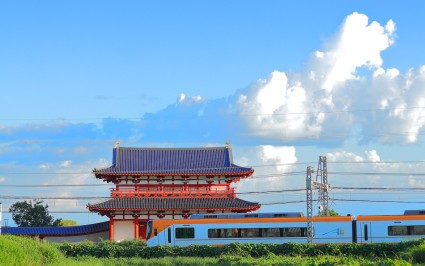In two cases challenging the use of race in college admissions, the U.S. Supreme Court ruled that the educational benefit of racial diversity is no longer what it once called a “compelling interest.”
These decisions effectively end race-conscious college admissions. In my view, as a legal scholar of implicit bias and critical race studies, they do not end discrimination against Asian Americans, which was the advertised goal of the lawsuits.
The cases against Harvard and University of North Carolina at Chapel Hill were both brought by Students For Fair Admission, an organization created by Ed Blum, a California businessman who has successfully challenged many affirmative action and voting rights laws.
In the lawsuits, Blum strategically featured the plight of Asian Americans.
But before he could initiate the lawsuits, he needed people with the standing to sue.
“I needed Asian plaintiffs,” Blum told a group gathered by the Houston Chinese Alliance in 2015.
Why did Blum need Asian Americans? It’s my belief he felt the need because Asian Americans can be depicted as especially sympathetic victims and model minorities cruelly harmed by affirmative action.
It’s not surprising, then, to hear some Asian Americans celebrating the Supreme Court’s decision as striking down discrimination against them.
That’s not what actually happened.
Discrimination against Asian Americans
Are Asian Americans discriminated against in college admissions? That’s a hard question to answer, for two reasons.
First, in order to know what counts as discrimination, a baseline is needed for comparison. In other words, you must ask, “As compared to whom?”
For race discrimination, the natural comparison is with white people because historically that race has received the best treatment. This is why important civil rights statutes, passed after the Civil War, explicitly guarantee the same contracting and property rights “as is enjoyed by white citizens.”
Second, in order to uncover subtle discrimination, analysts often need statistical techniques. Both sides in the litigation used multiple regression, which selects a specific set of predictor variables – such as test scores, grade-point averages and race – and then calculates how much each variable affects the admissions decision controlling for all the others.
The two sides bickered over which variables should be included in the model. Harvard sought to include far more variables. In contrast, Students For Fair Admission wanted fewer.
It turned out that including more variables, such as personal ratings and legacy status, made race less important to the admissions decision.
That’s partly because personal ratings and legacy status are themselves correlated with race, and adding overlapping variables into the model blurs each variable’s unique impact.
In the end, the trial court sided with Harvard’s model, which meant that, in a comparison between an Asian and white applicant with identical test scores, GPAs, personal ratings, legacy status and so forth, the applicant’s race did not matter in the regression.
Thus, the court found no discrimination.
This finding was affirmed on appeal by the 1st Circuit Court of Appeals, and the Supreme Court did not overturn that finding.
In my view, it’s simply erroneous to think that the Supreme Court struck down discrimination against Asian Americans since none was ever found.
Ending affirmative action
Although the lawsuits emphasized the problem of discrimination against Asian Americans, their real target was the use of race in affirmative action programs that benefit underrepresented racial minorities.
Over the past 45 years, the court had cobbled together a compromise on affirmative action in higher education.
On the one hand, explicit race-conscious decision-making must satisfy strict scrutiny under the equal protection clause, with a requirement that it further a “compelling interest” through “narrowly tailored” means. Strict scrutiny is the most rigorous form of judicial review used to determine the constitutionality of certain laws.
On the other hand, in the rarefied domain of higher education, diversity would count as a “compelling interest.”
This diversity rationale was introduced by Justice Lewis Powell in his concurring opinion in Regents of the University of California v. Bakke in 1978.
In his analysis, Powell rejected the justification for affirmative action as a way to remedy centuries of past societal discrimination. He considered that justification “an amorphous concept of injury that may be ageless in its reach into the past.”
Instead, Powell settled on the concept of diversity.
Although no other justice joined Powell’s opinion, it broke the tie and decided the case. It’s this understanding of diversity-as-a-compelling-interest that eventually garnered majority support in Grutter v. Bollinger and Fisher v. University of Texas that allowed the use of race in college admissions to continue.
In 2023’s Students For Fair Admission cases, the Supreme Court tore up this delicate truce that enabled race to be used as a factor in college admissions.
Writing for the majority, Chief Justice John Roberts explained that the educational benefits of diversity were too unmeasurable to be compelling.
Whether the benefit was framed as training future leaders, better educating students through diversity or preparing engaged and productive citizens, Roberts wrote that these interests were “not sufficiently coherent for purposes of strict scrutiny.”
Robert’s opinion effectively ended affirmative action in higher education.
Does nothing to stop discrimination against Asian Americans
The Supreme Court ruling against affirmative action was a happy result for some conservative politicians and horrifying for civil rights advocates.
What’s important is to avoid confusion about the reasons why.
It’s my belief that the end of affirmative action does nothing to end discrimination against Asian Americans as compared to whites.
The reason why Asian Americans are treated worse than whites in college admissions is because huge preferences are given to legacy applicants, who are disproportionately white.
Another reason is that huge preferences are given to athletes in sports that include tennis, lacrosse and fencing. These athletes are also disproportionately white.
Finally, Asian Americans likely suffer some discrimination in personal ratings because of implicit biases.
Recommendations and interviews are highly subjective, based on gut-level enthusiasm and reactions. That means they are vulnerable to implicit biases that frame Asians as mathematically competent but cold, foreign and unlikable.
If Students For Fair Admission’s true objective were to end discrimination against Asian Americans vis-a-vis whites, it would have asked the court to end legacy and athlete preferences and build procedural guardrails against implicit bias. It did not.
Zero-sum game
Of course, the point could be made – as the chief justice did – that “college admissions is a zero-sum game.”
“A benefit provided to some applicants but not to others necessarily advantages the former group at the expense of the latter,” Roberts wrote.
Under this logic, by ending affirmative action, Asian Americans as a group receive some small benefit in admissions chances. But remember that whites receive the exact same benefit. And legacy status, athletic experience and implicit biases will continue to favor whites over Asian Americans.
Finally, is this tiny benefit worth the cost of decreasing the number of Black, Latinx, Native American and underrepresented Asian and Pacific Islander students at elite colleges and universities?
In my view, the answer is no, but that question merits a hard conversation about the policies and principles underlying a racially just society.
I believe that Americans deserve to have that conversation without being misled into thinking that keeping affirmative action is the same thing as tolerating anti-Asian discrimination.
Jerry Kang is a p**rofessor of law at the** University of California, Los Angeles.
The Conversation is an independent and nonprofit source of news, analysis and commentary from academic experts.
© The Conversation














24 Comments
Login to comment
sakurasuki
affirmative action, basically just a quota system for company or university need to meet to accept someone just based on certain race, gender, sexual preference and other things, not based on actual quality, skill or intelligence.
Antiquesaving
This sounds so familiar!
Someone trying to basically say the Asian students and groups that brought the lawsuit are stupid or manipulated by some much smarter white person.
The writer ignored the fact Asian students on average study 4 time more, had higher scores and had to get even higher to get in and we're penalized because they studied instead of participating in outside social activities.
It is as silly as Trudeau's claim Muslim Canadians in their protests are being tricked by American right wing, the truckers were financed by American MAGA, etc...
But it doesn't surprise me he says all he does and thinks the way he does. He is from California and one thing this Atheist socialist (me) has learned,
The most intolerant, closed minded, "do it my way " type are not religious concervatives, not general conservatives, etc..but the so-called progressives that wouldn't even listen to anything they disagree with, will not even have a friend that doesn't think exactly like them.
Despite being an atheist I have plenty of so-called conservative friends but few progressives because they just will not accept facts they don't like and cannot deal with contrary thinking.
This author has pull out every progressive trope possible he ends with this.
But we know he doesn't really want this because right from the first few paragraphs he pulls out the strawman Ed Blum as some sort of mastermind behind it all and poor Asians were tricked into following.
The Asian community is often less vocal and they are now realizing that unless they push like all the rest they will get more discrimination.
Look at Canada, Asians make up a far greater percentage that blacks by 5+ times but we hear far more from the later and have far more action on black issues that Asian because the black community out protest out yell, etc..
Now Asians are starting to assert themselves this guy thinks it must be some white group manipulation.
Redemption
As far as I am concerned a private university can admit anyone for any reason. Diversity in US culture is a noble goal. I walked on the UC San Diego campus a few years ago. Whites are few, blacks nonexistent. Very odd how it ended up so focused on test scores.
ian
Of course.
But that reason has to be applied to everyone equally no discrimination.
FizzBit
I imagine a drunk spider trying to repair a broken web with this convoluted anti white paragraph.
Redemption
The US is going nowhere fast, spinning its wheels. Sad.
commanteer
Which means no scholar at all, but a regurgitator of pseudo-Marxist propaganda.
falseflagsteve
This madness has to end soon, just treat everyone equally you see. There you go it’s sorted, problem solved.
Strangerland
Equality of opportunity is not a pipe dream. Equality of outcome is.
We should be aiming for equity.
albaleo
I find the article confusing, probably because I'm not an American. Can someone explain what "legacy status" means? I'm assuming it's something to do with one's family members having already attended the university. Is that right? I hope I'm wrong as it sounds like madness.
Redemption
Legacy status means a prior family member that actually contributed to and attended the university and without whom it would not exist. It does not include newcomer parasites.
TaiwanIsNotChina
At least you got that right.
I guess we will have to take our #1 major economy status to the bank.
Strangerland
No extremist rhetoric in that statement! Carry on.
Peter Neil
In a better world, applicants would have a number or identifier at the time of submission. No name, sex, race, address, no high school name, only grades and classes, test scores and other information, such as honors, etc.
Claim your admission if your number is selected.
albaleo
Well, thanks for the info about "legacy status". But as the first person in my family to attend university, did I qualify as a newcomer parasite?
Yrral
Taiwan, Asian benefited off the back of the Black Civil Rights movement,where have Asian ever launch a legacy of civil rights in America,that somebody else benefited from in America
JeffLee
Not it hasn't. It's because whites have long been the majority in the US and remain the majority. Societies draw up standards and guidelines largely using trends among the majority as a baseline, which is not controversial. Do you think any society in Asia would do otherwise? LOL. The exception would be an Apartheid type society, which is maybe what the author would like to see.
As for best treatment, a set of socio-economic indicators show that Asians receive the best treatment in the US. A cop, for example, is twice as likely to shoot a white person than an Asian person, to cite just one of a large number of indicators.
Yrral
False,only way equality will be achieved in America,when a legal death blow is dealth to White Supremacy
Yrral
You have billion of Asian,living under oppression, perpetrated by Asian against other Asian
opheliajadefeldt
I wish every one would stop referring the the USA as a democracy. It is not and never has been. It was designed as a plutocracy from the very beginning to keep the land, wealth, etc... in the hands of the 1% wealthy, rich, white and powerful. And it has not changed. Over 200 yrs of racism is ingrained in the society and it will not change in the next 2 generations or beyond.
FizzBit
It must have been some aliens that briefly took over the US in the late 1800’s that passed “important civil rights statutes, passed after the Civil War, explicitly guarantee the same contracting and property rights as is enjoyed by white citizens.” and then the evil white racists, and Daniel Craig, wrestled it back from them.
Invalid CSRF
TaiwanIsNotChina
Then you don't live in one either, and democracy doesn't exist, which is nonsensical set of beliefs to have.
You have to have sizable numbers of different races in your country to complain about racism.